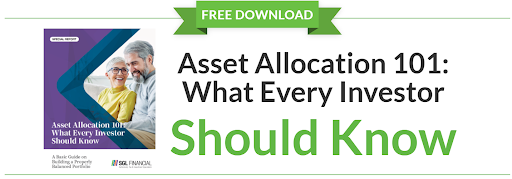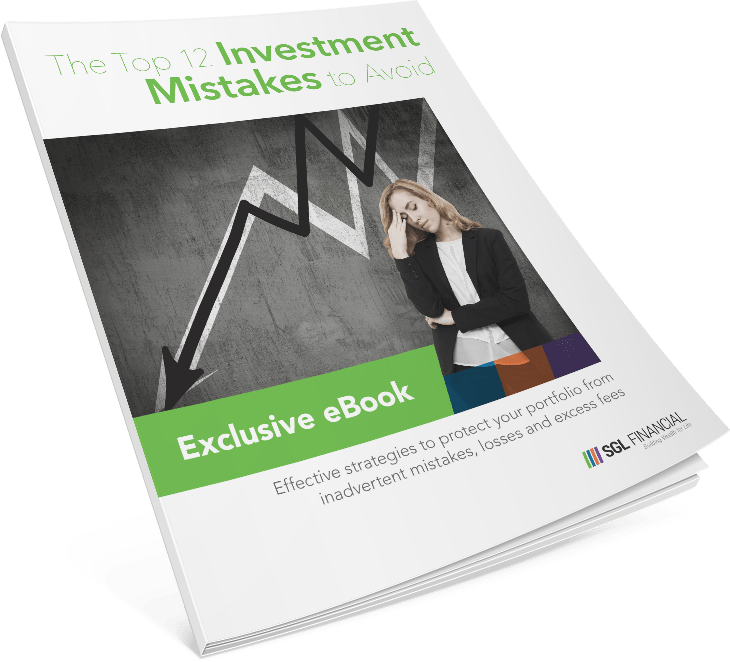Tax Strategies to Protect and Preserve Your Wealth
by Gabriel Lewit

Taxes may be an inevitable part of life, but overpaying on your taxes doesn’t have to be.
In this article, we’ll explore three common questions clients ask when it comes to tax planning:
- How can high earners minimize taxes without making risky moves?
- What tax strategies help protect investment gains in the long term?
- Which tax planning tools work best for entrepreneurial income?
At SGL Financial, an effective tax management service is one of the most essential tools for improving net returns and preserving accumulated wealth.
Whether you’re a high-income earner, an entrepreneur, or someone focused on long-term retirement planning, various strategies can help reduce your tax burden, protect your investments, and create more flexible outcomes for the future.
Read our latest guide: Dealing with Financial Crises: Proactive Wealth Strategies
Tax Question #1: How can high earners minimize taxes without making risky moves?
As a high-income earner, you may face some complex tax situations, but reducing your tax liability doesn’t require risky or speculative strategies. A certified Buffalo Grove CFP® professional can help evaluate a variety of trusted, tax-smart tactics.
Diversification Using Asset Location
One of the most effective ways to manage taxes over time is to diversify your investments across different account types, a strategy known as asset location, that is, what types of investments are in which accounts.
This means spreading your investments among tax-deferred accounts (like traditional IRAs and 401(k)s), tax-free accounts (such as Roth IRAs and Roth 401(k)s), and taxable brokerage accounts. Each account type is taxed differently, so having a mix gives you more flexibility when it’s time to withdraw funds, especially in retirement.
By carefully choosing which accounts to draw from and when, you can reduce your tax bill in high-income years and preserve tax-advantaged growth for the future. It’s a foundational strategy for building a more tax-efficient long-term financial plan.
Use tax-loss harvesting to offset gains and reduce your tax bill.
Selling investments that have declined in value, also known as tax-loss harvesting, can help offset gains from selling other investments in your portfolio.
Besides offsets, you can deduct up to $3,000 from your ordinary income each year if your capital losses exceed your gains. Any remaining losses can be carried forward to future tax years.
This strategy can be beneficial in volatile markets. When used thoughtfully, it can reduce the drag taxes have on long-term investment returns.
Prioritize retirement account contributions.
One of the most effective ways to reduce taxable income is by fully funding tax-advantaged retirement accounts. Contributing the maximum to accounts like 401(k)s, SEP IRAs, Solo 401(k)s, IRAs (traditional and Roth), or even Cash Balance Plans (for business owners) allows you to deduct those contributions from your income, lowering your tax bill in the current year.
At the same time, the investments inside these accounts grow tax-deferred, giving your portfolio higher net returns to compound over time without immediate tax consequences. This dual benefit of reducing today’s taxes and deferring future taxes makes retirement accounts a cornerstone of any long-term tax planning strategy.
Consider Roth conversions.
A Roth conversion allows you to move money from a traditional IRA or 401(k) into a Roth IRA, where future growth and withdrawals can be tax-free. A backdoor Roth IRA offers a workaround for high earners who don’t qualify for direct Roth contributions.
These strategies can be especially valuable if you expect tax rates to rise in the future. You’ll pay some taxes now, potentially at a lower rate, and enjoy tax-free income later in life when you are retired.
SGL Tip: These are practical, proven strategies designed for high earners. When you work with an experienced Buffalo Grove CFP® professional, these tactics are integrated into a personalized, long-term plan to pursue your goals and other financial priorities.
Watch our Co-Founder, Steve Lewit, discuss the impact of tariffs on the stock market on WGN9 News.
Tax Question #2: What tax strategies help protect investment gains long-term?
Protecting assets isn’t just about returns during volatile markets; it’s about keeping more of what you earn for future use. These strategies can help to maximize growth while locking in gains. With guidance from an experienced Buffalo Grove financial advisor, you can protect your wealth over the decades.
Here are some core strategies aligning your long‑term financial plan with your investment and goals.
Avoid short-term gains in taxable accounts.
Prioritize long-term holdings. Selling after one year triggers lower long-term capital gains rates than short-term ones, and this simple approach significantly reduces your tax burden.
1031 exchanges for real estate.
If you own investment property, a 1031 like‑kind exchange can defer taxes indefinitely by rolling the gain on one property into another.
Charitable gifting of appreciated assets.
Donating investments, rather than cash, allows you to avoid capital gains taxes on sales and receive a full donation deduction in the current tax year. Tools like donor-advised funds and charitable remainder trusts expand this strategy further and may be a source of income.
Customized portfolios with SMAs.
Separately Managed Accounts, like the name implies, your assets are not combined with anyone else’s assets. SMAs provide tax-efficient management, allowing you to plan for capital gains while aligning your investments with your tax situation.
SGL Tip: We help clients protect long-term investment gains through personalized, tax-efficient strategies that reduce unnecessary tax drag and support lasting growth.
Listen to our recent podcast on “Jedi Economics.”
Tax Question #3: Which tax planning tools work best for entrepreneurial income?
Entrepreneurs and business owners have unique investment opportunities, and unique tax burdens. Here are a few tactics that combine both business and personal financial planning:
Business Structure: S-Corp or C-Corp
Choosing the proper legal structure, such as an S-Corp or C-Corp, can significantly affect your tax liability:
- S-Corp owners can pay themselves a reasonable salary (subject to payroll taxes) and take additional income as distributions, which are not subject to self-employment tax.
- C-Corp structures may benefit businesses planning to reinvest earnings or offer employee stock options, though they are subject to double taxation (corporate and dividend levels).
The key is choosing the entity that aligns with your income, growth plans, and compensation goals. A Buffalo Grove CFP® professional can coordinate with your CPA to model the tax differences. Or, you can get financial and tax planning services from a fiduciary financial advisor and a team of expert in-house CPAs all under one roof by working with SGL Financial.
Solo 401(k) and SEP IRA
These retirement plans are ideal for solo entrepreneurs and small business owners:
- Solo 401(k): Allows employer and employee contribution, up to $70,000 in 2025 for those over 50, creating significant room to defer income and lower current taxes.
- SEP IRA: Easier to administer and allows contributions up to 25% of compensation (or up to $70,000 in 2025), making it a flexible option for single-owner businesses or those with relatively few employees.
Both plans help reduce taxable income while building retirement savings with tax-deferred growth.
Cash Balance Plans
A Cash Balance Plan (defined benefit plan) can allow contributions well into the six figures annually for high-income entrepreneurs seeking even greater deductions.
It’s ideal for those who want to accelerate retirement savings while lowering taxable income. It’s particularly valuable if you’re in your peak earning years and already maxing out other plans.
SGL Tip: Each tool can be powerful, but when coordinated as part of a broader financial plan, they can help you, as a business owner, lower your tax liability and build long-term wealth more efficiently.
Interested in a personalized tax strategy?
Partner with SGL Financial for tailored tax planning strategies that efficiently preserve, grow, and transfer wealth. Learn how we can support your long-term goals with clarity and purpose. Connect today.

